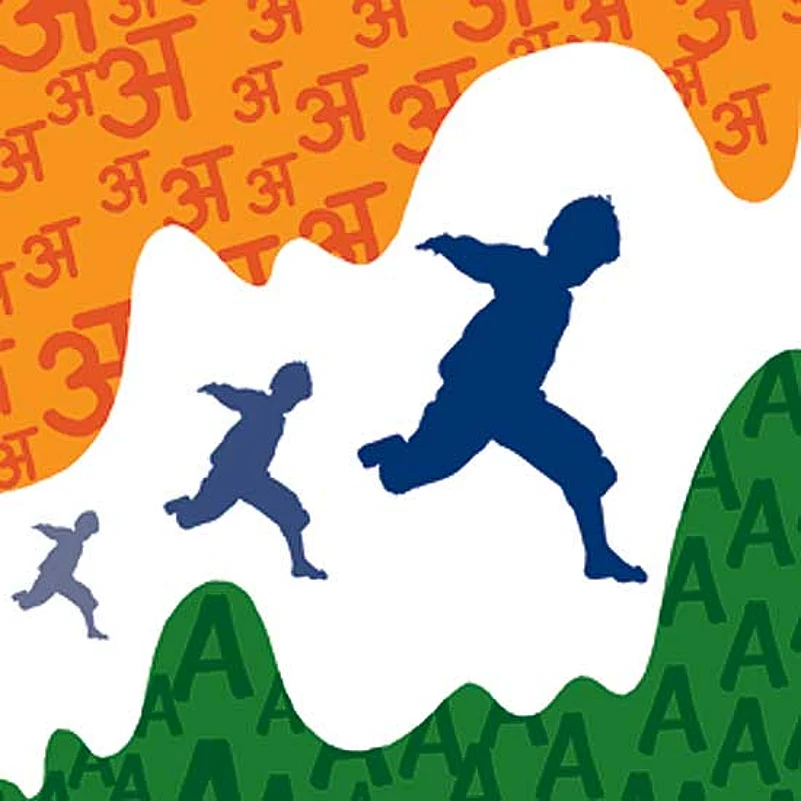Around 1865, John Gilchrist of the Fort William College, Agra, got four natives to translate various texts into Hindi. The idea was to derive a standardised vernacular for British
army commanders and pastors to communicate with the masses. A century later, in January 1965, when the very same Hindi was to become independent India’s sole official language, fierce riots broke out in the Madras state.
After a long debate, the Constituent Assembly had settled for Hindi as India’s official language, but in view of bitter opposition from the non-Hindi-speaking states, had also provided that for “fifteen years from the commencement of this Constitution, the English language shall continue to be used for all the official purposes of the Union for which it was being used immediately before such commencement”. Later, many figures, including those in the ruling Congress, were vociferous in denouncing English as a language of the colonial past that must be exorcised. But the protesters of 1965, led by C.N. Annadurai, demanded English must continue and got their way, thus guaranteeing a virtually indefinite bilingualism for India.
There were reasons for the non-Hindi states’ unease over Hindi. The first was the sheer size and demography of the Hindi belt that helped elect no less than five prime ministers of India from the north. In Parliament, the combative impulsiveness of Congressmen like P.D. Tandon and Dr Raghuvir also rubbed many the wrong way. Then there was the north-centric Jan Sangh’s xenophobic support for ‘Hindi- Hindu-Hindustan’, which many non-Hindus viewed as another conspiracy to use language for dividing the nation. However, in the decades that followed, the ingenuity of India’s vernaculars allowed them to penetrate the enormous power of the English language through the channels of entertainment and media, where their native spirit of playful buffoonery removed the awe and horror of serious ideology. By the end of the century, we had had more than one prime minister from the south, regional parties had formed democratic coalitions with parties in the Centre, and Hindi, as the language of the marketplace, had shed much of its artifice and allowed itself to become a genial, confident and relaxed catchment area for India’s languages.
Today it is undeniable that English has come to signify social status and good education in India. And with TV and mobile phones guaranteeing connectivity to villagers in the remotest areas, the English language has begun to wash even in the rural backwaters. Anecdotal evidence also suggests that knowledge of English helps not just in getting better jobs but also substantially improves one’s chances in the matrimonial market. Maids, drivers, guides, and even beggars earn better if they can speak English. The Samajwadi leadership that supported Hindi has been trounced in UP and the Dalits in power are singing paeans to the ‘English Devi’, whose birthday was celebrated with Lord Macaulay’s, with Dalit thinker Chandrabhan Prasad cutting a cake! Mayawati has recently declared that English will be taught in all state-run schools in UP.
A major impediment is that after six decades of linguistic bipolar disorder, all states face a severe shortage of teachers armed with necessary skills for teaching the Queen’s English. But in the age of revolutionary inventions in communication technology, if there is a will, it can be tackled.
In the last three decades, the southern states have grown economically and their regional parties no longer need anti-Hindi demonstrations and the routine blackening of billboards on Hindi Day to win elections. The Hindi belt has also begun to buy more and more newspapers and TVs. Since it occupies all the top slots for the most viewed TV channels and highest circulating newspapers in India, the Hindi media has also befriended English as an equal and is trying hard to show the nation how wrong they were about Hindi. With the regional media, films and television channels flourishing in the liberalised market, India of the 21st century has ceased to obsess over the adverse impact of globalisation on its economy or culture. Each state now wants to move on with the rest of the nation, English and all. Quite a 60-year journey.
(The author is a broadcaster and writer, in both English and Hindi.)
























